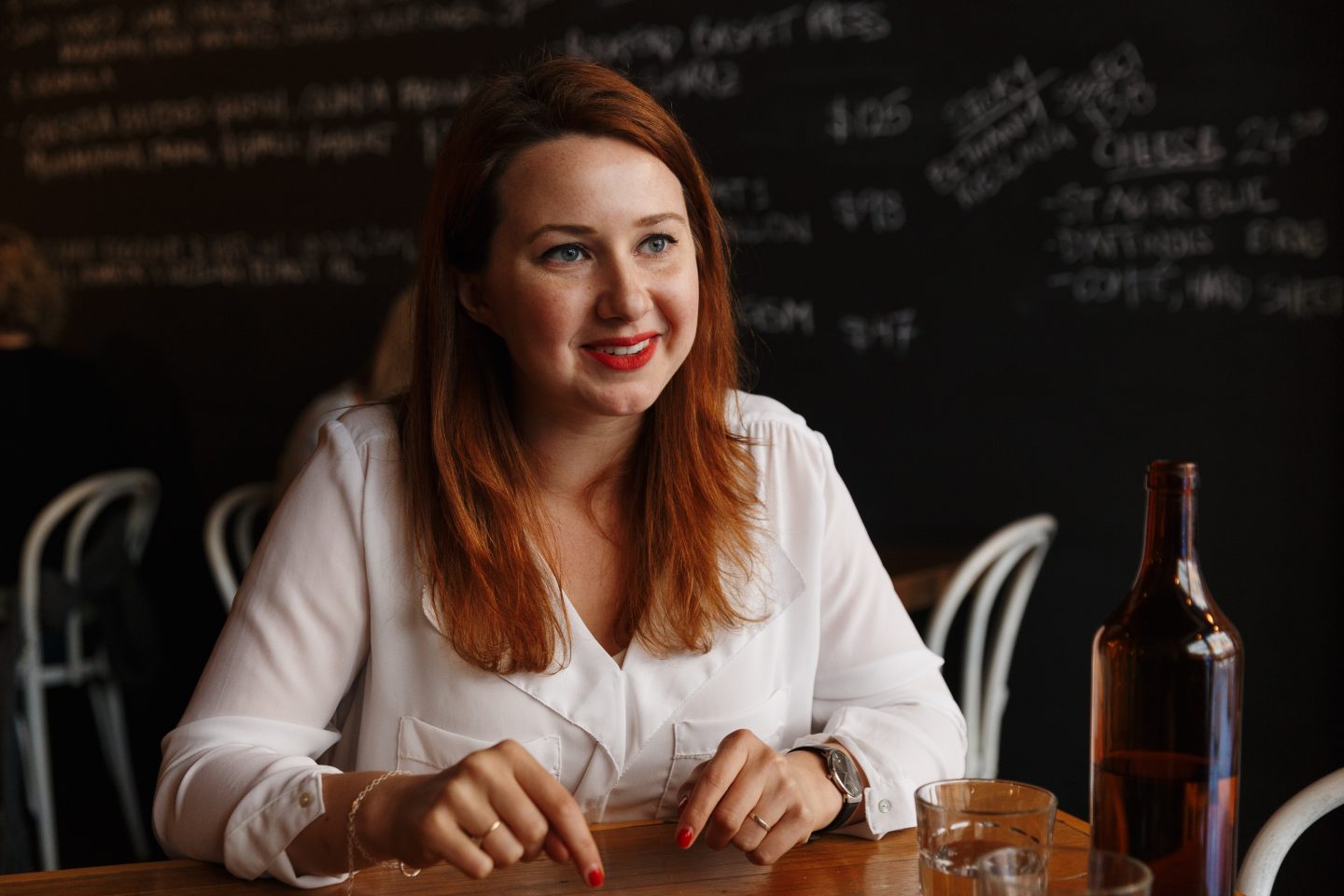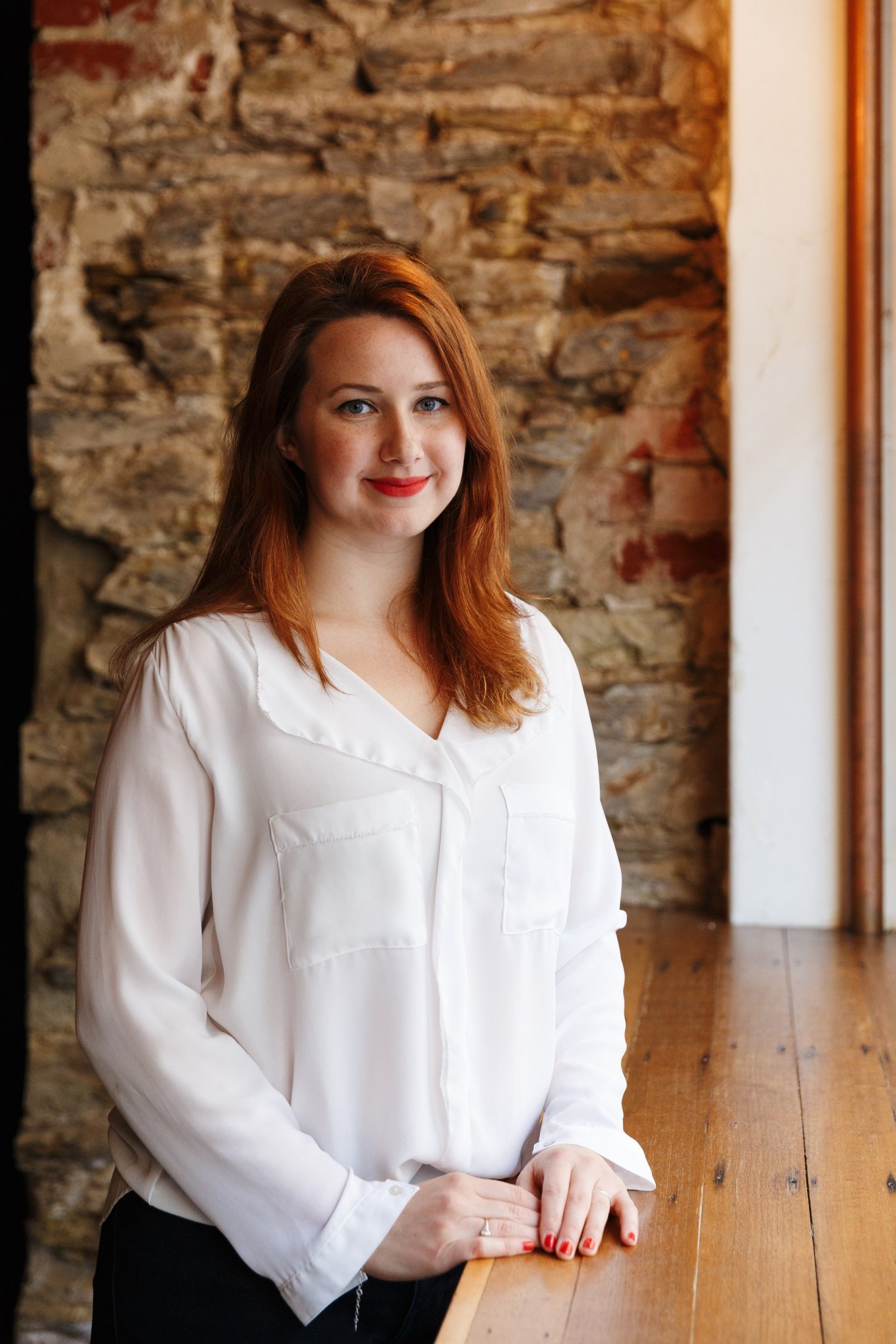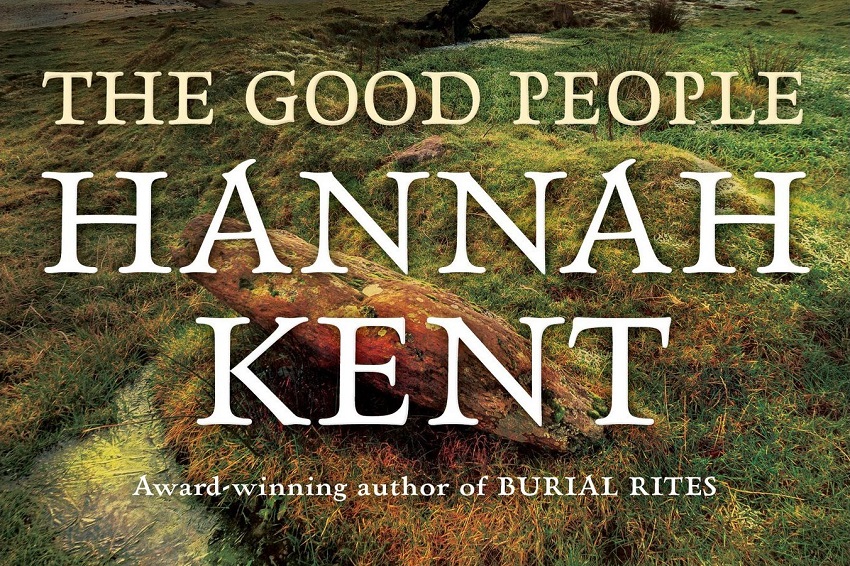Hannah Kent on The Good People: 'I wanted to improve from book to book'

With her second novel The Good People, Adelaide Hills–raised writer Hannah Kent returns to the northern hemisphere to explore the human story of an extraordinary 19th century true–crime case but where Burial Rites focussed on the last woman to be executed in Iceland, her latest novel follows a trio of women and fairy lore in rural Ireland.
The Adelaide Review meets the Melbourne-based Kent in Peel St Restaurant, the day after a meet the author event at Elder Hall, which was presented by Stirling’s Matilda Bookshop, the Adelaide Hills bookshop where Kent launched her debut novel, Burial Rites. The Good People has only been out for two weeks but Kent says that quite a few readers have told her they enjoy her new book more than Burial Rites, which pleases the co-founder of literary journal Kill Your Darlings, as she wants to “improve from book to book”.
It isn’t hyperbolic to claim that Hannah Kent is a local literary sensation. The manuscript of her debut novel sparked a bidding war with a rumoured million dollar advance for her first two novels. Burial Rites became a hit, was translated into nearly 30 languages and Hollywood writer and director Gary Ross (The Hunger Games, Pleasantville) was set to direct an adaptation with Jennifer Lawrence attached to star. The historical novel was a fascinating and unglamorous account of Agnes Magnúsdóttir, who was forced to live with a family in rural Iceland as her execution date loomed. Kent discovered that story when she was an exchange student in Iceland and became fascinated by Magnúsdóttir.
“Everywhere I turned to find out information about her I was met with a stereotype of the evil scorned woman,” she says. “There was nothing of the human about that. A big part of writing that book was, very fortunately, being able to access archives and historical sources and uncovering a biography outside the context of crime. And then writing about her in a sense not to say that she was innocent or make her out to be a victim but to show that people aren’t just good or bad, our lives are shaped by many external circumstances, and there are things which might limit the choices we feel we have to make.”

Like Burial Rites, The Good People transports the reader to the hardships of peasant life in the 19th century, but this book focuses on a lesser-known case, where a fairy doctor Nance Roche, also known as Anne Roche, was accused of banishing fairies or the good people in south-west Ireland. Kent stumbled across this story when researching her first novel. She didn’t immediately think that this case would form the basis of her second book, as she was focused on writing Burial Rites, but she was struck by the story.
“I have always been interested in folk traditions and fairy lore in its older original sense – not twee bottom of the garden fairies,” Kent says. “This just seemed like an extraordinary case where in that world, which I very much regarded as the realm of the fairy story, the legend had intersected with reality in a very big way in quite a recent time. That’s what struck me. I thought this was more or less part of an oral culture in the sense of storytelling. I didn’t realise that it affected people’s behaviour and that they then might run into the law because they were practising or living within this worldview. That’s what interested me. I think at that stage I wanted to find out a little bit more about folk traditions in Ireland, particularly.”
Kent has been fascinated by fairy lore since she was a child reading books such as Enid Blyton’s The Faraway Tree.
“As I got older, I started to understand the context of these fairy stories or the original stories that were behind them. It’s like watching Cinderella a s a kid and then realising that in the original story the step sisters carved their heels off. You see the darker shadow of all this stuff which is embedded in our culture and I found that fascinating.”
Growing up in the Adelaide Hills, Kent was in an Irish folk band and used to perform at events such as the Glenelg Folk Festival, this sparked an interest in folk stories from Ireland.
“There’s a lot of storytelling in Irish music and I would encounter these stories in the jigs and ballads and whatever else that we were playing. I think that, as well, was my entry point into the wonderful world of Irish story.”
Kent looked to research The Good People in a similar way to Burial Rites but couldn’t discover any information investigating from Australia.
“So I started thinking, ‘That’s okay, I’ll research the world this woman lived in, try to work out where she was coming from to try and understand this world view, this mindset, this particular faith that she had and hopefully down the track, when I get to Ireland, I can access those same original primary sources’.
“And I did go to Ireland: found nothing.”
The 31-year-old thought surely this case was remarkable enough for there to be another article to join the original one she had found years earlier. So, she went to a library in Dublin to scroll though microfilm of newspapers from that time.
“It took so much time, a couple of days, and I’m getting closer and closer to the trial dates, and I hadn’t encountered anything. I thought it [the coverage] must have occurred really close to the trial. I get to a point where I’m getting closer [to the trial dates] and the paper skips six months. I went into the bathroom and cried because I was so frustrated.
“I thought, ‘Oh well, I’ve got this remaining time at the library in Dublin, I’ll just look at another paper from this time’, which was in the neighbouring county. I’m scrolling through this newspaper, just trying to get a sense of how they lived, what was happening, not really invested in it, and then I see the name: Anne Roche. I wound back and realised that the article I was looking for in the other paper had been syndicated to the next paper. It was one of those moments in research that makes it all worthwhile.”
From the second newspaper article, a story started to emerge as the first article described a woman called Anne Roche who claimed she was a fairy doctoress and couldn’t be accountable for her crimes as she was trying to banish a changeling (fairy). But the second article mentioned two other women.
“It’s funny, I wrote Burial Rites to avoid archetypes, yet that is what attracted me to this trio of women: you’ve got the crone, you’ve got the mother and you’ve got the maiden. I thought there was enough possible conflict to explore. From that point, I tried to find out more information about them. I found no biographical information whatsoever, could find no other accounts of them, so I just had these two newspaper articles. For Burial Rites, I had a mountain of sources.
“For me, the process of writing the book was saying, ‘I know what happens, it’s weird and it’s extreme and tragic. How do I do a backwards narrative to get to a point where everything is normal?’ It’s a bizarre ending, it’s a bizarre conclusion, but it has to start at a place we can relate to. So that was the great challenge.”
Kent contacted academics who worked in departments of folklore (“It’s fantastic that they have departments of folklore in Ireland, it’s like being the head of Hogwarts,” Kent laughs) and was able to meet people who were knowledgeable in the old ways of thinking. Though they knew of similar infamous cases, they weren’t across this one.
“We were able to talk about other changeling cases from the 1800s. For instance, there’s this very famous case of this woman who was basically tortured and burnt alive by her family because they believed that she was a changeling; that she had been stolen by the fairies and the fairies had replaced her with someone who represents her but was an imposter. Her name was Bridget Cleary.”
This belief in fairies hasn’t completely eroded from Ireland. Kent says a researcher she met told her a story about a priest friend, who was called to a farm to pray for a sick cow.
“The farmer had hedged his bets because there was a vet and a fairy doctor, someone in the community who was equipped with the knowledge or the power to deal with fairy-related illnesses. So, it is still very much a thing. The vet said, ‘I don’t think there’s anything we can do’. The priest said, ‘I’ll pray for the cow’. It was winter. There was ice all over the barn. Nothing much happened, the cow was still down. Then the fairy doctor apparently came down, whispered something in the cow’s ear, did a charm and laid his hands on it. The priest said he suddenly saw steam. The cow got up, and the ice around the door started melting and dripping down. The priest was really frustrated because he had to fill out all the paperwork to report a miracle because there was no other way of describing what he saw. It worked.”
While Kent has called Burial Rites a dark love letter to Iceland, The Good People is an ode to nature, as the good people were very much connected to the seasons, as was Nance, who was in touch with nature and used herbs to treat the townspeople.
“People have used the word witch in Australia [to describe Nance]. Witch never entered it, this was an old role; this had been around in Ireland for a long time, the position of the woman who would mourn the dead, deliver children.
“It made me look at the natural world in a different way. It made me realise that in our modern world there’s this dissociation from nature. Whereas people in the past were a little more connected, because they had to be. We drive everywhere when it’s raining. We have air-conditioning, we don’t feel the seasons, the weather doesn’t shape our days the way it used to. It might be an inconvenience but it doesn’t form a big role in our behaviour.”
Did reminiscing about the Adelaide Hills have a part to play in writing about nature for this book?
“Totally. I have lots of fond memories growing up in the Hills, being out and about. Halfway through the edits I came back. It was good mushroom season, so I’d pick pine mushrooms. Doing a lot of things like that, a lot of gardening. My herb garden is great. I feel like I’ve developed my herb garden through the course of writing this book, so I’m pretty proud of it.”
Finally, Kent says she is planning to return to the Hills.
“My family’s still here. My sister as well. I miss it. Melbourne’s a great city and I love living there. I’m in the inner city but you can’t take the Hills out of the girl, really.”
Hannah Kent’s The Good People is out now via Picador

